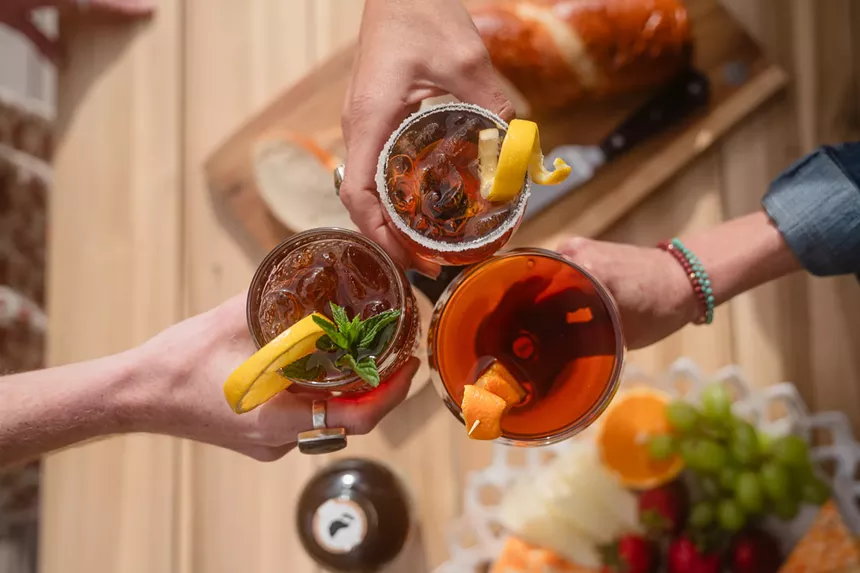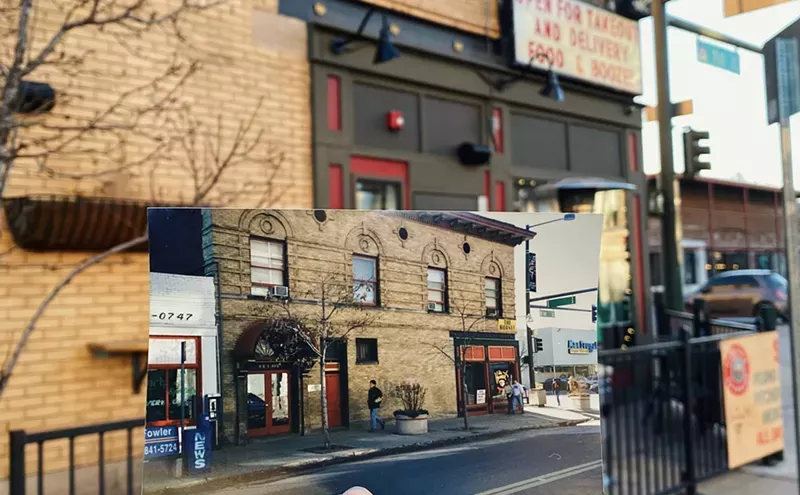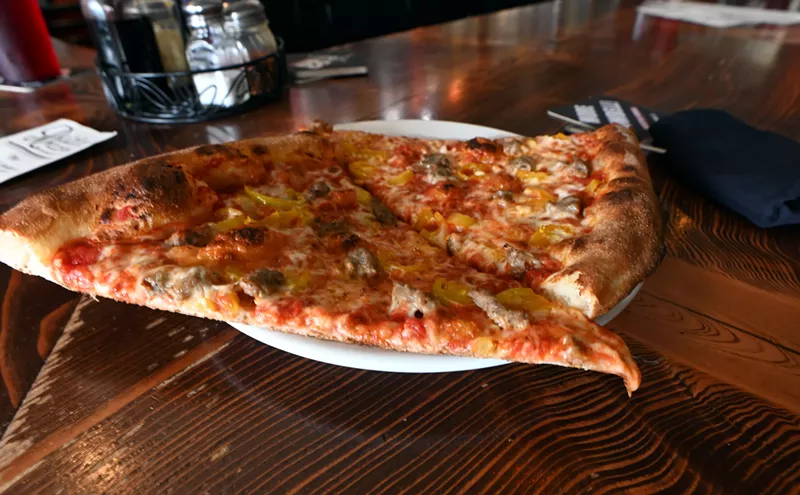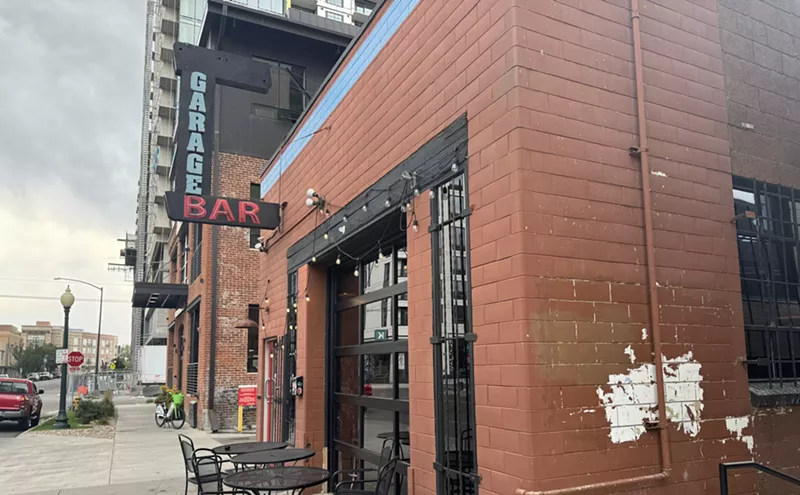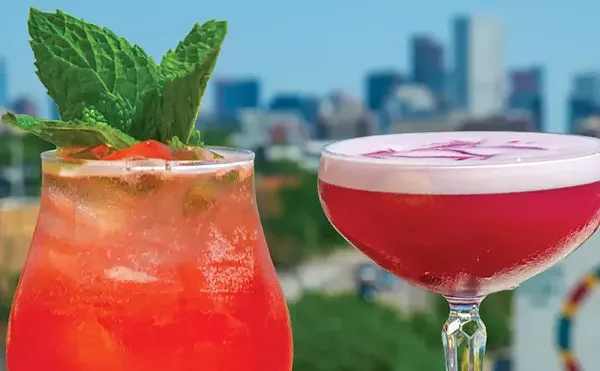The Alcohol and Tobacco Tax and Trade Bureau just made American single malt an official category earlier this year, but Hoot + Howl was ready for it.
“I grew up in the mountains. On a big powder day, it’s pretty hard not to hoot and howl on your way down the mountain," says founder Callan Deline, explaining the distillery's name. Hoot + Howl plans to capture that adventurous spirit with its first five spirits, now available in select liquor stores.
Deline and head distiller Chris Ritenour (formerly of Mythology Distillery) make up the core of the company — in fact, they’re the company’s only two employees. The two worked on developing the distillery’s first products over the past year and a half; they hosted dozens of side-by-side trials and tastings, giving the lineup a very refined feel for such a new company. “The connection is that they are all historically inspired spirits that we want to put our own unique twist on,” says Deline.
Hoot + Howl started out in Englewood, in the former Devil’s Head Distillery. As that lease was ending, the partners knew they would need more room; fortunately, Golden Moon Distillery space was on the market last summer, and Hoot + Howl jumped at the chance to take one of the three units that previously housed Golden Moon. “We were really fortunate that the space is in phenomenal shape,” says Deline.
The Golden distillery came with two former Golden Moon stills. Hoot + Howl is using those, as well as its own 100-gallon still from Englewood. “Distilleries three times our size often have only one still, so to have three different stills is really cool,” says Deline. “If we had built our own space, we’d still be waiting."
Instead, they were able to launch their initial lineup on May 22 with five spirits.
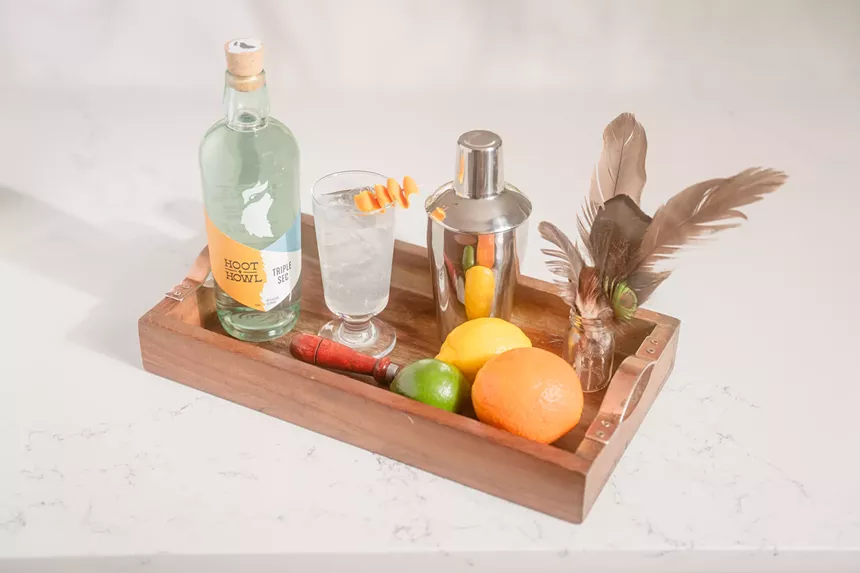
The distillery will make both common spirits like gin and vodka, but also less seen varieties such as triple sec and black tea liqueur.
Hoot + Howl
There's a gin made with local botanicals such as white sage, bay laurel, wormwood, juniper and lemon balm. The spirit is the end result of a lot of experimentation and fine-tuning; according to Ritenour, the goal was to capture the feel of the mountains in the flavor and aroma of the gin. “One afternoon, Chris went across the street in Englewood and grabbed a bunch of spruce tips off the tree,” recalls Deline. That ingredient ended up making the final cut.
The Triple Sec and Black Tea Liqueur share an ingredient: bergamot peel. They’re also both double-distilled before being heated back up to around 160°F and slowly cooled. That mellowing technique is something Deline and Ritenour learned from some old distillation books. “It’s not something that we take for granted,” says Ritenour, explaining that it’s a very deliberate process. “We blind taste them all the time. The double-distilled is better every time, and on the liqueurs, the ones that go through that extra mellowing step are significantly better every time.”
That technique involves extra work, but Deline and Ritenour don't mind; they’re just happy to have found ways to stand out in a crowded, competitive market.
There's also a slightly sweet, smooth vodka that works just as well for sipping straight as it does in a Mule. And the final spirit is an Armagnac-finished bourbon, a seven-year blend sourced from Indiana’s MGP and finished an additional year in an Armagnac barrel. “We blended the bourbon specifically for the Armagnac,” says Deline.
Ritenour has a lot of experience using finishing barrels, and he’s taken that honed approach to Hoot + Howl. “I’m not blending [the whiskey] to taste great on its own; the idea is for it to pair well with the [finishing] barrel that it’s going into,” he says. “If you select a blend that is really sweet and round and caramelly, that might be delicious to drink now, but if you put that into a barrel that adds more sweetness to it, then it just becomes a little cloying.”
Instead, Ritenour focuses on finding supporting and contrasting flavors to go into each finishing barrel. The entire process requires a lot of foresight and some educated guesses as to where the final product will land; Ritenour says it's a bit of an art, but there’s a lot of intentional tasting along the way. “You know it’s going to be in the barrel for probably nine to twelve months, so you don’t need to taste it for the first six months,” he adds. “As you get closer, you start to taste it once a month. By nine months, it’s really tasting good, but if it’s safe to keep going, you’re tasting it basically weekly.”
What the duo is most passionate about, though, is single malt. “The ultimate flagship will be American single malt, and that’s where we think we have the most [opportunity] for differentiation,” says Deline.
The distillery is using a Belgian yeast, the T-58 from Fermentis Labs that's popular with beer brewers, to make its base wash for the single malt. It’s also using higher-end grains from Weyermann Malting, a German maltster who supplies the grains for many of the area’s best lager breweries.
One of those breweries is Prost Brewing in Northglenn. Deline’s older brother, David, is the president of Prost, and that's where the base wash is brewed, before being distilled in Golden. Prost is also carrying Hoot + Howl spirits at all of its locations, making cocktails at the bar with those spirits.
Ritenour has found a place for applying old brandy-making techniques into single malt whiskey. “We’ll fill five barrels at a [typical] 125 proof, but then we’ll fill one at roughly 40 proof,” he says. “Going into the barrel at that lower proof, you get a completely different flavor profile that you can use to back blend and use it to lower the proof [of the stronger whiskey], instead of water.”
While five spirits is already a lot to launch with, Hoot + Howl will also release an Amaro-finished bourbon over the summer. It will be at a different proof: The team believes in proofing the final product to taste the best, not to hit a pre-determined spec. Ritenour is also developing an Alpine liqueur that will come out sometime after.
Neither Ritenour nor Deline have much interest in running a bar, but they plan for a small tasting room on-site, and they’re looking forward to working closely with bartenders to develop cocktails using Hoot + Howl spirits. “I know that bars tend to make the money, but Chris and I prefer the spirits side of things,” says Deline.



